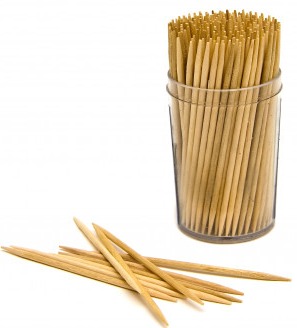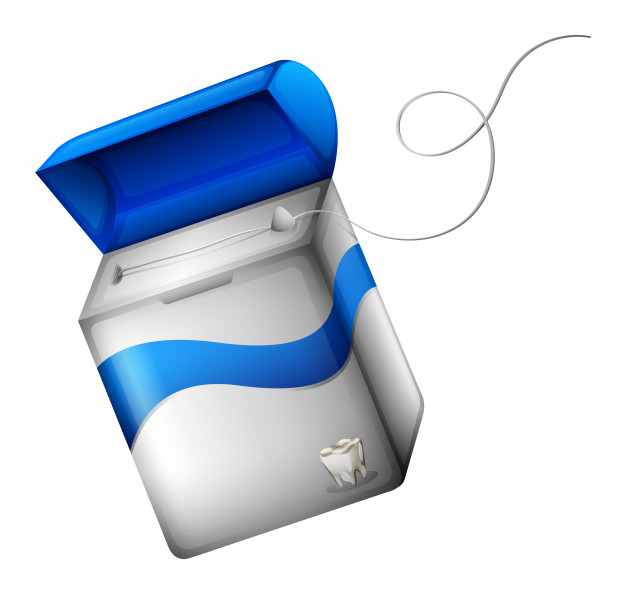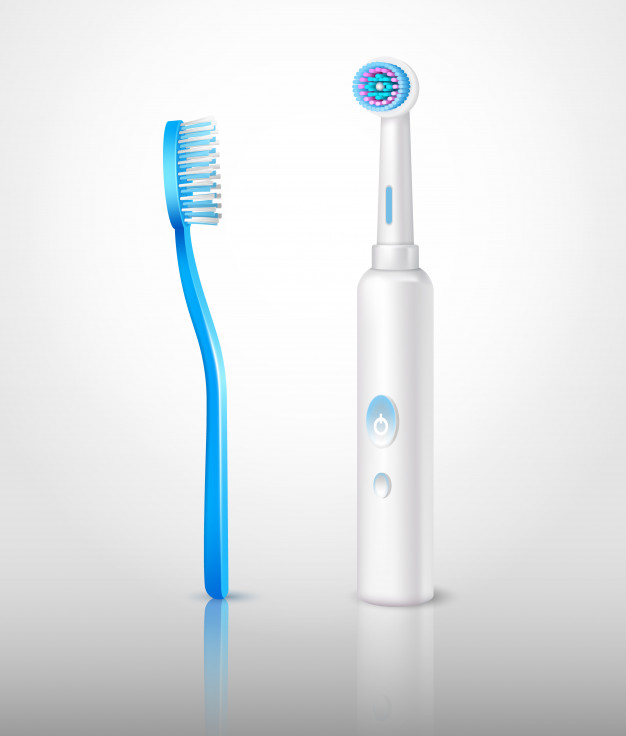Bài học cùng chủ đề
Báo cáo học liệu
Mua học liệu
Mua học liệu:
-
Số dư ví của bạn: 0 coin - 0 Xu
-
Nếu mua học liệu này bạn sẽ bị trừ: 2 coin\Xu
Để nhận Coin\Xu, bạn có thể:

Practice SVIP
The tips below will help you learn about actions you can take to protect yourself and others from flu and help stop the spread of germs.
1. Avoid close contact.
Avoid close contact with people who are sick. When you are sick, keep your distance from others to protect them from getting sick too.
2. Stay home when you are sick.
If possible, stay home from work, school, and errands when you are sick. This will help prevent spreading your illness to others.
3. Cover your mouth and nose.
Cover your mouth and nose with a tissue when coughing or sneezing. It may prevent those around you from getting sick. Flu and other serious respiratory illnesses, like respiratory syncytial virus (RSV), whooping cough, and COVID-19, are spread by cough, sneezing, or unclean hands.
4. Clean your hands.
Washing your hands often will help protect you from germs. If soap and water are not available, use an alcohol-based hand rub.
5. Avoid touching your eyes, nose or mouth.
Germs are often spread when a person touches something that is contaminated with germs and then touches his or her eyes, nose, or mouth.
6. Practice other good health habits.
Clean and disinfect frequently touched surfaces at home, work or school, especially when someone is ill. Get plenty of sleep, be physically active, manage your stress, drink plenty of fluids, and eat nutritious food.
Read and choose the correct answer.
1. What is the best title for the passage?
The tips below will help you learn about actions you can take to protect yourself and others from flu and help stop the spread of germs.
1. Avoid close contact.
Avoid close contact with people who are sick. When you are sick, keep your distance from others to protect them from getting sick too.
2. Stay home when you are sick.
If possible, stay home from work, school, and errands when you are sick. This will help prevent spreading your illness to others.
3. Cover your mouth and nose.
Cover your mouth and nose with a tissue when coughing or sneezing. It may prevent those around you from getting sick. Flu and other serious respiratory illnesses, like respiratory syncytial virus (RSV), whooping cough, and COVID-19, are spread by cough, sneezing, or unclean hands.
4. Clean your hands.
Washing your hands often will help protect you from germs. If soap and water are not available, use an alcohol-based hand rub.
5. Avoid touching your eyes, nose or mouth.
Germs are often spread when a person touches something that is contaminated with germs and then touches his or her eyes, nose, or mouth.
6. Practice other good health habits.
Clean and disinfect frequently touched surfaces at home, work or school, especially when someone is ill. Get plenty of sleep, be physically active, manage your stress, drink plenty of fluids, and eat nutritious food.
Read and choose the correct answer.
2. Which sentence is true?
The tips below will help you learn about actions you can take to protect yourself and others from flu and help stop the spread of germs.
1. Avoid close contact.
Avoid close contact with people who are sick. When you are sick, keep your distance from others to protect them from getting sick too.
2. Stay home when you are sick.
If possible, stay home from work, school, and errands when you are sick. This will help prevent spreading your illness to others.
3. Cover your mouth and nose.
Cover your mouth and nose with a tissue when coughing or sneezing. It may prevent those around you from getting sick. Flu and other serious respiratory illnesses, like respiratory syncytial virus (RSV), whooping cough, and COVID-19, are spread by cough, sneezing, or unclean hands.
4. Clean your hands.
Washing your hands often will help protect you from germs. If soap and water are not available, use an alcohol-based hand rub.
5. Avoid touching your eyes, nose or mouth.
Germs are often spread when a person touches something that is contaminated with germs and then touches his or her eyes, nose, or mouth.
6. Practice other good health habits.
Clean and disinfect frequently touched surfaces at home, work or school, especially when someone is ill. Get plenty of sleep, be physically active, manage your stress, drink plenty of fluids, and eat nutritious food.
Read and choose the correct answer.
3. What does "respiratory illnesses" mean?
The tips below will help you learn about actions you can take to protect yourself and others from flu and help stop the spread of germs.
1. Avoid close contact.
Avoid close contact with people who are sick. When you are sick, keep your distance from others to protect them from getting sick too.
2. Stay home when you are sick.
If possible, stay home from work, school, and errands when you are sick. This will help prevent spreading your illness to others.
3. Cover your mouth and nose.
Cover your mouth and nose with a tissue when coughing or sneezing. It may prevent those around you from getting sick. Flu and other serious respiratory illnesses, like respiratory syncytial virus (RSV), whooping cough, and COVID-19, are spread by cough, sneezing, or unclean hands.
4. Clean your hands.
Washing your hands often will help protect you from germs. If soap and water are not available, use an alcohol-based hand rub.
5. Avoid touching your eyes, nose or mouth.
Germs are often spread when a person touches something that is contaminated with germs and then touches his or her eyes, nose, or mouth.
6. Practice other good health habits.
Clean and disinfect frequently touched surfaces at home, work or school, especially when someone is ill. Get plenty of sleep, be physically active, manage your stress, drink plenty of fluids, and eat nutritious food.
Fill in the blanks with no more than two words from the passage.
1. Flu and other serious respiratory illnesses are spread by cough, sneezing, or .
2. Clean your hand with an hand rub unless soap and water are available.
3. Some of good health habits: sleep enough, be physically active, manage your stress, drink plenty of , and eat nutritious food.
The tips below will help you learn about actions you can take to protect yourself and others from flu and help stop the spread of germs.
1. Avoid close contact.
Avoid close contact with people who are sick. When you are sick, keep your distance from others to protect them from getting sick too.
2. Stay home when you are sick.
If possible, stay home from work, school, and errands when you are sick. This will help prevent spreading your illness to others.
3. Cover your mouth and nose.
Cover your mouth and nose with a tissue when coughing or sneezing. It may prevent those around you from getting sick. Flu and other serious respiratory illnesses, like respiratory syncytial virus (RSV), whooping cough, and COVID-19, are spread by cough, sneezing, or unclean hands.
4. Clean your hands.
Washing your hands often will help protect you from germs. If soap and water are not available, use an alcohol-based hand rub.
5. Avoid touching your eyes, nose or mouth.
Germs are often spread when a person touches something that is contaminated with germs and then touches his or her eyes, nose, or mouth.
6. Practice other good health habits.
Clean and disinfect frequently touched surfaces at home, work or school, especially when someone is ill. Get plenty of sleep, be physically active, manage your stress, drink plenty of fluids, and eat nutritious food.
Read and match these statements with their title.
Read and choose the best answer to complete the passage.

Your head aches and you sneeze and cough. Your
- mouth
- head
- face
- nose
- cures
- fevers
- diseases
- symptoms
- hungry
- miserable
- happy
- thirsty
Everyone suffers
- about
- from
- with
- of
- headache
- misery
- illness
- allergy
- fewer
- more
- less
- much
- running
- flowing
- jogging
- walking
- there are
- it is
- they are
- there is
Although there is no cure or preventive medicine for colds, people have all kinds of ideas about
- how
- where
- why
- what
- Others
- Other's
- Another
- Other
How many calories can you burn in one hour?
Well, it all depends on the activity. You burn off calories all the time, even when you are resting. Reading, sleeping, sitting and sunbathing all use about 60 calories in an hour.
Very light activities consume 75 calories. Examples are eating, writing, knitting, shaving, driving and washing up.
Light activities which use about 100 calories in an hour include playing the piano, getting dressed and having a shower.
Under moderate activities which use between 100 and 200 calories in an hour. We can name some such as walking, doing housework, shopping and skating.
Energetic activities use 200 - 400 calories. These ones include horse riding, cycling, swimming, skipping and dancing.
Finally, there are strenuous activities which use up to 600 calories per hour. These activities include climbing stairs, jogging, digging the garden and playing football.
Read and choose the correcr answer.
Do different activities use different number of calories?
How many calories can you burn in one hour?
Well, it all depends on the activity. You burn off calories all the time, even when you are resting. Reading, sleeping, sitting and sunbathing all use about 60 calories in an hour.
Very light activities consume 75 calories. Examples are eating, writing, knitting, shaving, driving and washing up.
Light activities which use about 100 calories in an hour include playing the piano, getting dressed and having a shower.
Under moderate activities which use between 100 and 200 calories in an hour. We can name some such as walking, doing housework, shopping and skating.
Energetic activities use 200 - 400 calories. These ones include horse riding, cycling, swimming, skipping and dancing.
Finally, there are strenuous activities which use up to 600 calories per hour. These activities include climbing stairs, jogging, digging the garden and playing football.
Read and choose the correct answer.
What does "strenuous" mean?
How many calories can you burn in one hour?
Well, it all depends on the activity. You burn off calories all the time, even when you are resting. Reading, sleeping, sitting and sunbathing all use about 60 calories in an hour.
Very light activities consume 75 calories. Examples are eating, writing, knitting, shaving, driving and washing up.
Light activities which use about 100 calories in an hour include playing the piano, getting dressed and having a shower.
Under moderate activities which use between 100 and 200 calories in an hour. We can name some such as walking, doing housework, shopping and skating.
Energetic activities use 200 - 400 calories. These ones include horse riding, cycling, swimming, skipping and dancing.
Finally, there are strenuous activities which use up to 600 calories per hour. These activities include climbing stairs, jogging, digging the garden and playing football.
Read and choose the correct answer.
Which activity uses the most calories?
How many calories can you burn in one hour?
Well, it all depends on the activity. You burn off calories all the time, even when you are resting. Reading, sleeping, sitting and sunbathing all use about 60 calories in an hour.
Very light activities consume 75 calories. Examples are eating, writing, knitting, shaving, driving and washing up.
Light activities which use about 100 calories in an hour include playing the piano, getting dressed and having a shower.
Under moderate activities which use between 100 and 200 calories in an hour. We can name some such as walking, doing housework, shopping and skating.
Energetic activities use 200 - 400 calories. These ones include horse riding, cycling, swimming, skipping and dancing.
Finally, there are strenuous activities which use up to 600 calories per hour. These activities include climbing stairs, jogging, digging the garden and playing football.
Read the passage again and put these activities into the correct groups.
- sleeping
- digging the garden
- knitting
- skating
- shopping
- climbing stairs
- sitting
- shaving
Restful activities
Very light activities
Under moderate activities
Strenuous activities
How many calories can you burn in one hour?
Well, it all depends on the activity. You burn off calories all the time, even when you are resting. Reading, sleeping, sitting and sunbathing all use about 60 calories in an hour.
Very light activities consume 75 calories. Examples are eating, writing, knitting, shaving, driving and washing up.
Light activities which use about 100 calories in an hour include playing the piano, getting dressed and having a shower.
Under moderate activities which use between 100 and 200 calories in an hour. We can name some such as walking, doing housework, shopping and skating.
Energetic activities use 200 - 400 calories. These ones include horse riding, cycling, swimming, skipping and dancing.
Finally, there are strenuous activities which use up to 600 calories per hour. These activities include climbing stairs, jogging, digging the garden and playing football.
Read again and match the activities with the number of calories they use in an hour.
How can we keep our teeth healthy?
Firstly, we ought to visit the dentist at least twice a year. He can fill the small holes in our teeth before they destroy them. He can examine our teeth to check that they are growing in the right way. Unfortunately, many people wait until they have a toothache before they see the dentist.
Secondly, we should brush our teeth with a toothbrush and fluoride toothpaste at least twice a day once after getting up and once before going to bed. We can also use the dental floss to clean between our teeth after a meal.
Thirdly, we should eat food that is good for our teeth and our body: milk, cheese, fish, brown bread, potatoes, red rice, raw vegetables and fresh fruits. Chocolate, sweets, biscuits and cakes are bad, especially when we eat them between meals. They are harmful because they stick to our teeth and cause decay.
Read and fill in the blank with ONE word from the passage.
1. We should visit the dentist at least a year.
2. Some people wait until they have a before they see the dentist.
3. We'd better brush our teeth at least a day.
How can we keep our teeth healthy?
Firstly, we ought to visit the dentist at least twice a year. He can fill the small holes in our teeth before they destroy them. He can examine our teeth to check that they are growing in the right way. Unfortunately, many people wait until they have a toothache before they see the dentist.
Secondly, we should brush our teeth with a toothbrush and fluoride toothpaste at least twice a day once after getting up and once before going to bed. We can also use the dental floss to clean between our teeth after a meal.
Thirdly, we should eat food that is good for our teeth and our body: milk, cheese, fish, brown bread, potatoes, red rice, raw vegetables and fresh fruits. Chocolate, sweets, biscuits and cakes are bad, especially when we eat them between meals. They are harmful because they stick to our teeth and cause decay.
Read again and choose the correct answer.
Which is the dental floss?



How can we keep our teeth healthy?
Firstly, we ought to visit the dentist at least twice a year. He can fill the small holes in our teeth before they destroy them. He can examine our teeth to check that they are growing in the right way. Unfortunately, many people wait until they have a toothache before they see the dentist.
Secondly, we should brush our teeth with a toothbrush and fluoride toothpaste at least twice a day once after getting up and once before going to bed. We can also use the dental floss to clean between our teeth after a meal.
Thirdly, we should eat food that is good for our teeth and our body: milk, cheese, fish, brown bread, potatoes, red rice, raw vegetables and fresh fruits. Chocolate, sweets, biscuits and cakes are bad, especially when we eat them between meals. They are harmful because they stick to our teeth and cause decay.
Read and put these foods into the correct groups.
- fresh fruits
- cakes
- chocolate
- sweets
- raw vegetables
- potatoes
- fish
Good foods for our health
Bad foods for our health
Rearrange these sentences to make a complete dialogue.
- Yesterday, I went skiing all day. Now I have a temperature and sore throat.
- You should take some medicine and drink more water.
- Yes. I'm really tired and don't want to do anything.
- Hey, Ken. You look a bit down. What's the matter with you?
- Oh! It's awful. You must feel terrible.
- I know. Thanks.

Bạn có thể đăng câu hỏi về bài học này ở đây
